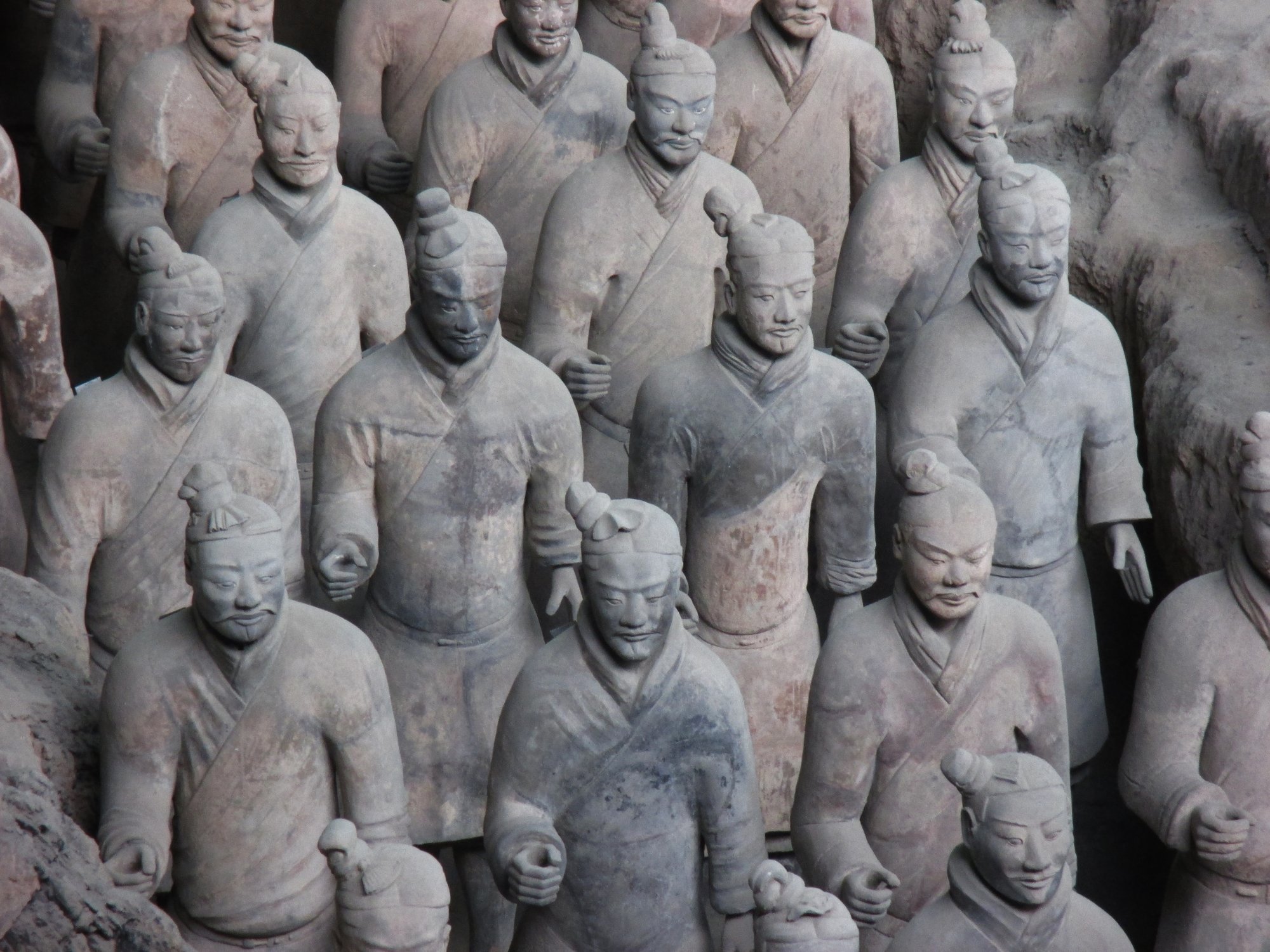My flight from Hong Kong to Xi’an was delayed due to a storm in Hong Kong, but the real problem, I discovered, was to enter China with my (not Chinese) passport. The last few times I have traveled to China, I entered from Beijing or Shanghai, where most of foreigners enter and officials are accustomed to foreign passports.
I, however, found myself stuck in front of the immigration desk. The employee looked at my passport, then at me, then at my passport again. Then he looked me in the eye. ‘Why did you emigrate?‘, he asked. ‘Well, I didn’t‘, I replied, a bit puzzled, ‘I was born in Europe.’
‘Ah, I see. Why are you trying to immigrate (as in permanently), then?‘ More confused, I explained that I was not trying to immigrate to China, either.
Now, it was his turn to be confused: ‘Then, what are you doing here?‘
– ‘Sightseeing, and visiting some relatives.‘
– ‘Why have you never been to China before?’
– ‘I have, several times.’
– ‘But your passport is empty.’
– ‘I got a new one two months ago, the old one expired.’
– ‘Why did you get your visa in France?’
– ‘I didn’t, it says Frankfurt, not France.’
He now turned to the front page with the date and place where the passport was issued. ‘I cannot read this‘, he complained.
At this point, I was getting a tiny bit nervous if I was going to be able to enter China. It occured to me that most tourists probably took either train or inland flights to Xian where they did not have to go through immigration again. I, on the other hand, took a flight from Hong Kong which has another visa policy altogether. To add to that, most foreign passports they see come with foreign faces, whereas I looked like everyone else there. I was grateful that I spoke Mandarin.
After a while, the queue behind me grew dangerously long, he sighed and waved me on. ‘I still don’t understand why there’s a French visa in there‘, he mumbled.
‘Well‘, I thought to myself as I hurried on, ‘me neither.‘
I chose a good time to go to Xi’an, the temperatures were high, but acceptable (30°C), and my first stop was the ancient city wall that surrounds the old town. It gives a nice view of the city, couples and families rent a bike or a tandem to explore more of the walls. Modern Xi’an, beginning just outside the city walls, towers over the remaining parts of ancient China.






bell tower

drum tower

The next morning, I got up early to queue for the Shaanxi Museum. Somehow, the government had decided to make the museum free of charge, which is a nice idea but does not quite work in a country with over a billion people. We got up at half past six to queue up for the museum which opened at nine…well..there was already a long line of earlybirds waiting to get to their tickets. All Chinese passports were scanned, but as soon as the guy behind the desk saw my passport, he dismissed it with a quick wave of his hand and handed me my ticket.
Eventually, I made it into the museum (another line), but (surprise) it was so full of people that I could not really enjoy the art and objects displayed. Little children running around, crowds pushing you from one wall to another, and it’s nearly impossible to get a better look at the more interesting things.
Although Beijing is known to be the Chinese emperor’s home with its palace and such, it only became China’s capital relatively late in Chinese history, whereas Xi’an was its first political and cultural center over 3000 years ago! Later, as in around 200 BC, it became the first capital of the Chinese empire, unified by emperor Qin (who built the huge mausoleum with the terracotta warriors).
During the 6th century, Xi’an was even the biggest city in the world, and continued to flourish (under the name of Chang’an) to a cultural melting pot and political crossway, and, not to forget, it formed the beginning of the silk road. To me, I was shocked to see that more than a thousand years ago, people already had so much knowledge about foreign lands and cultures and were even trading with them. Xi’an was one of the cities were there was a lot of intellectual exchange, the emperor sometimes even preferred foreigners as officials because it was said that they were less corrupt.
The following seals show different cities’ names in Chinese to be stamped along the silk road. There were several other panels showing cities all the way from Xi’an to Rome and Athens.

Shaanxi Museum

Also home to many famous Chinese poets and writers, you can find many statues and monument dedicated to them.
The Great Wild Goose Pagoda was built to honor buddhist monk Xuanzang who brought back Sanskrit scriptures from India and translated them inside the pagoda later. One of China’s most famous books is based on this story, and the movie version is a staple in any Chinese household.






This shopping mall featured the biggest LED screen in the world, showcasing different short clips about the four seasons.
One evening, my relatives took me to a play/show called 长恨歌 or the Song of Eternal Sorrow based on a poem from the 9th century. It tells the story of Emperor Xuanzong (Tang Dynasty) and his concubine Yang Guifei (one of the four most beautiful women throughout 5000 years of Chinese History). The surrounding mountains and skies were incorporated for light effects as well as dance, some acrobatic and many other special effects.



the area is famous for growing pomegranates
The next morning, I was able to cross off a big item off my bucket list: the terracotta army in the tomb of emporer Qing Shi Huang.






0 thoughts on “Xi’an – 西安”